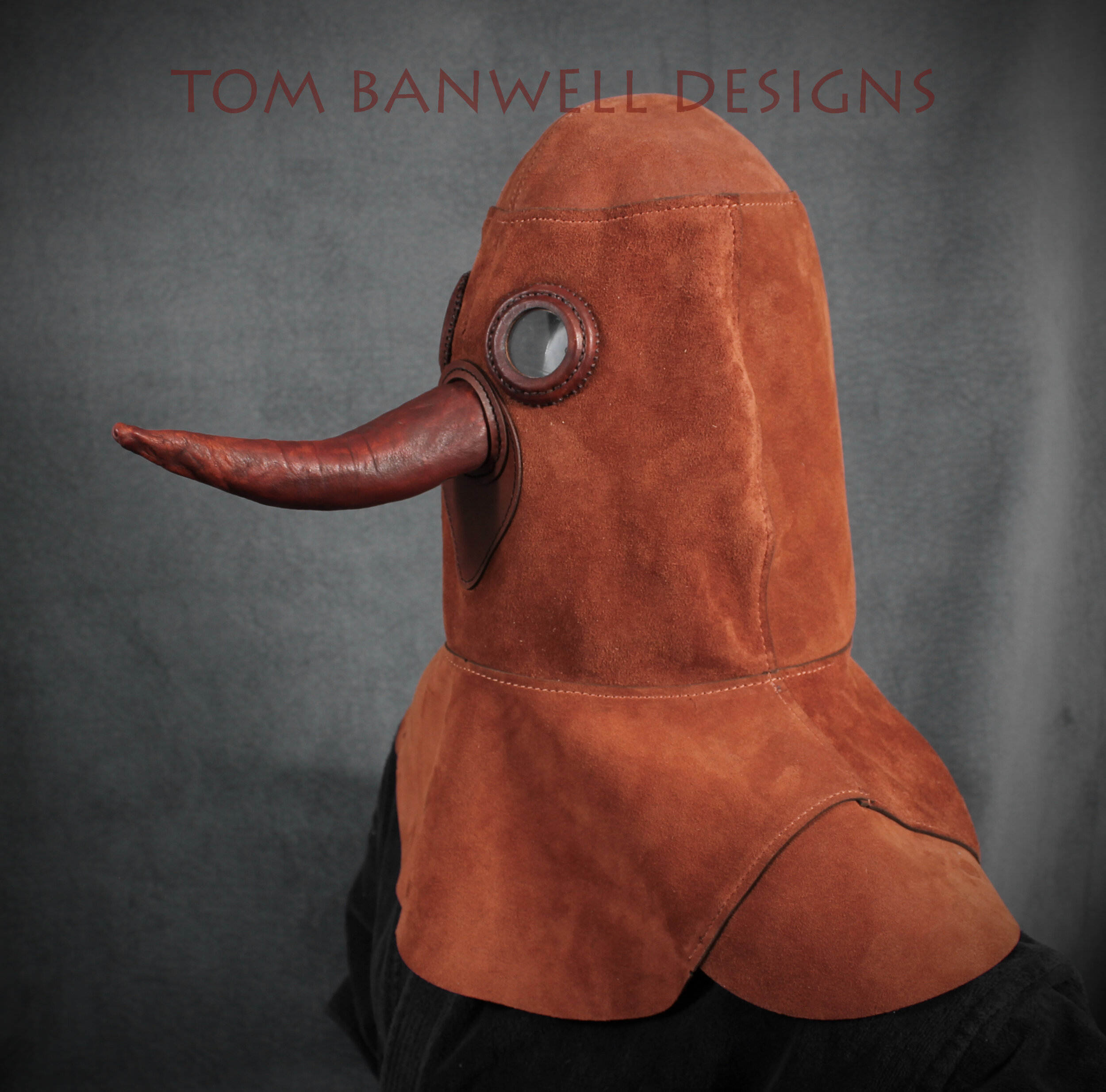Paul Furst Engraving from 1656
How do we know what historical plague doctor masks looked like? There are three different ways: Contemporary engravings, contemporary written descriptions, and extant examples.
Plague doctor masks as we know them today are based primarily on an anonymous engraving from around 1656 and copied several times, including by Paul Fürst.
The writings we have credit Charles de Lorme (1584-1678), personal physician to various members of the French royal household, as having invented the mask. The description of his outfit was published in 1682 by the Abbot Michel de Saint Martin some 63 years after de Lorme is credited with creating it, so it is second-hand information. He wrote:
‘He was never without his own design of (goatskin) leather coat, and dressed from head to toe with pantaloons and a mask of the same leather to which he attached a long nose half a foot in length in order to keep out the bad air.’
‘The outfit in which the doctors in Rome go to medicate in defense of the infectious disease is of waxed canvas, the face with eyeglasses, & the nose full of perfumes against the infection. They hold a staff because of their reduced vision and to demonstrate their operations.’
From German Medical History Museum, front view
From German Medical Historiy Museum, side view
Regarding extant examples of plague doctor masks, it is likely that none have survived the ±365 years since they were used. There are two quite similar masks in German museums which might be from the 17th century, but the provenance on both is non-existent and I suspect they are 19th century reproductions.
Nevertheless, I have made a copy of this mask, using split leather in place of the velvet in the German example. It differs from most plague doctor masks currently available (including my own) in that it is a hood and covers the entire head.
The nose and eyetrim are made of veg tan leather, shaped while wet.
The hood is made of split chap cowhide which is machine sewn.
The lenses are clear acrylic, and the leather trim has been hand-stitched with waxed thread.






